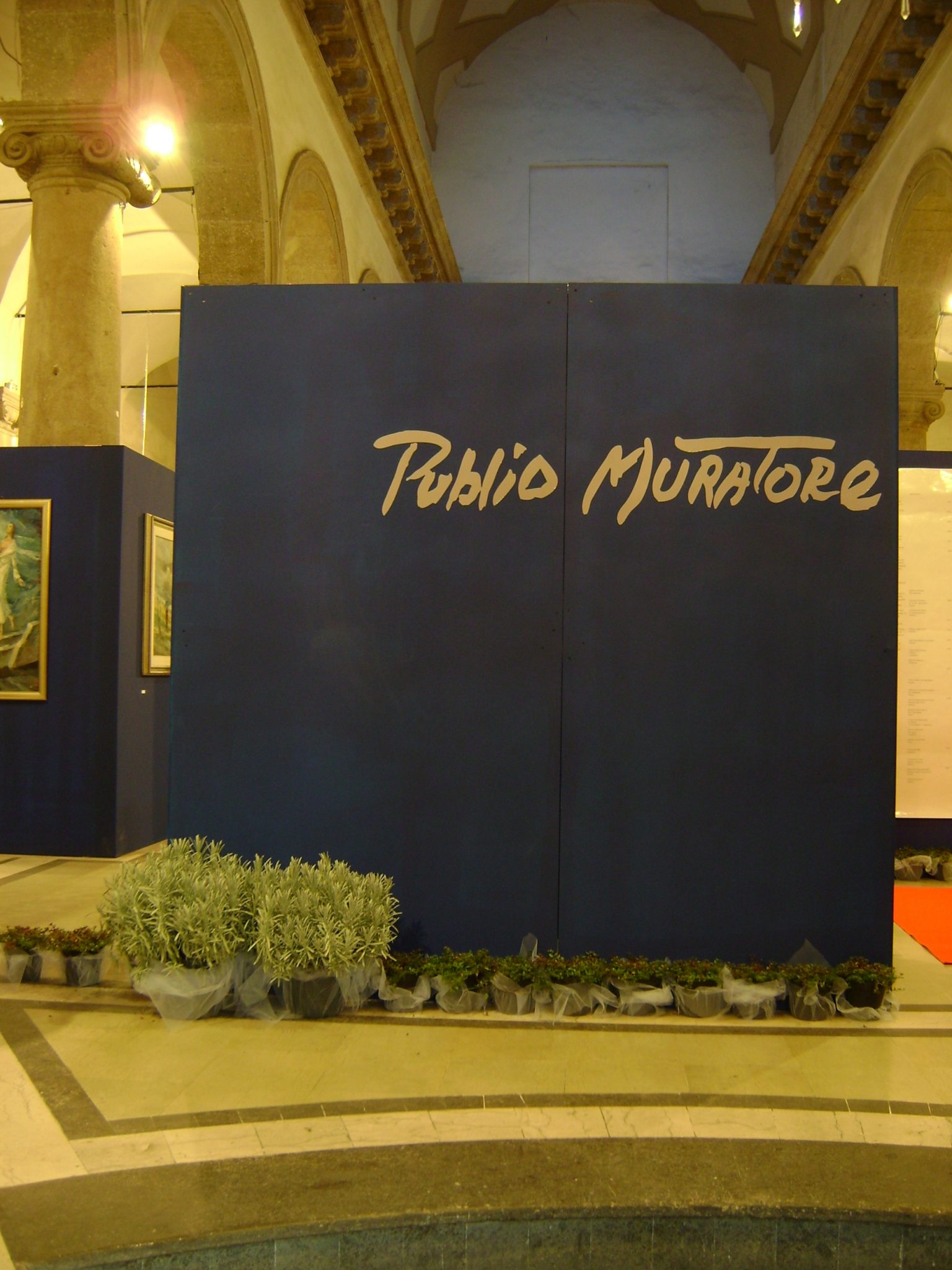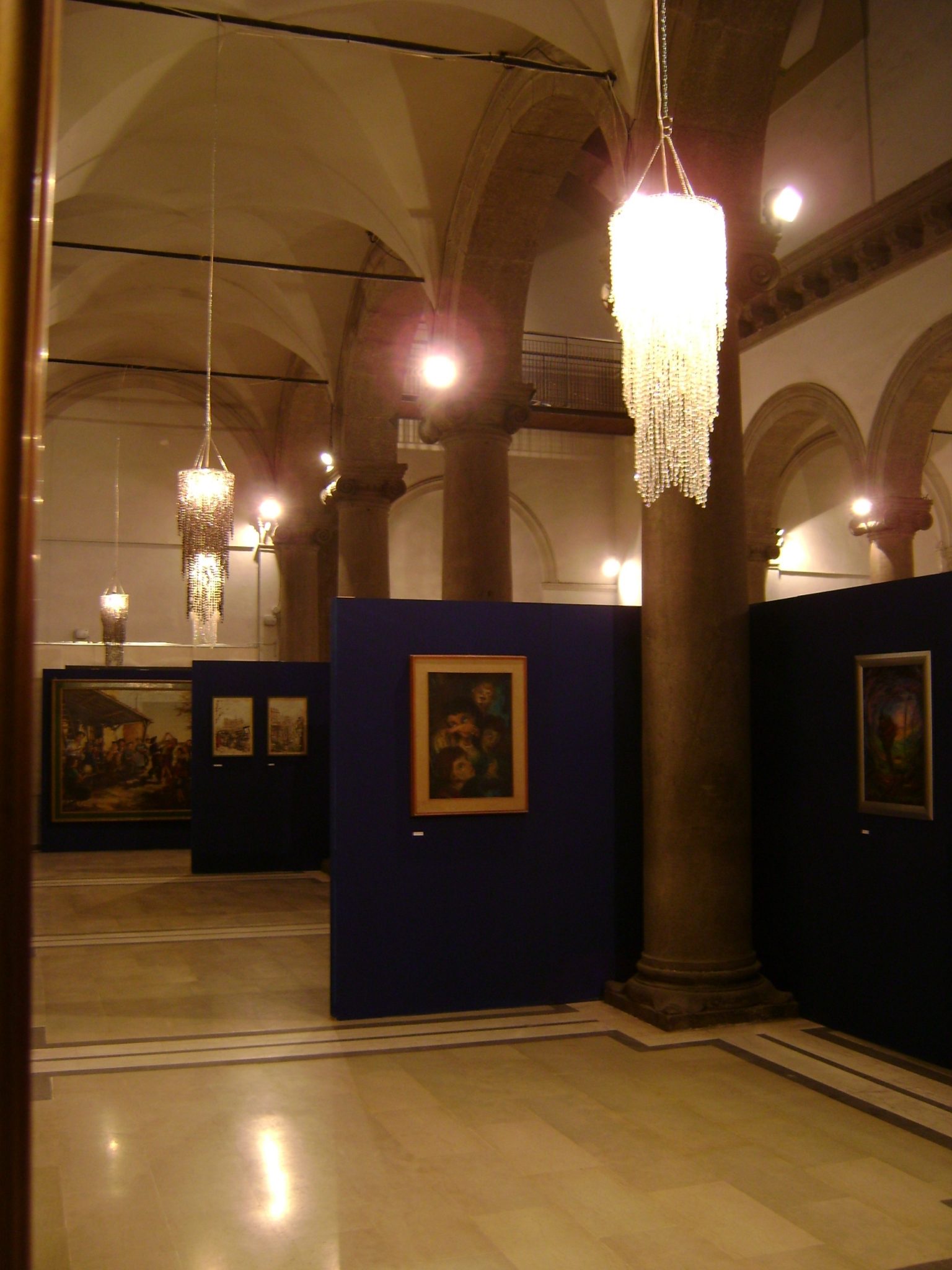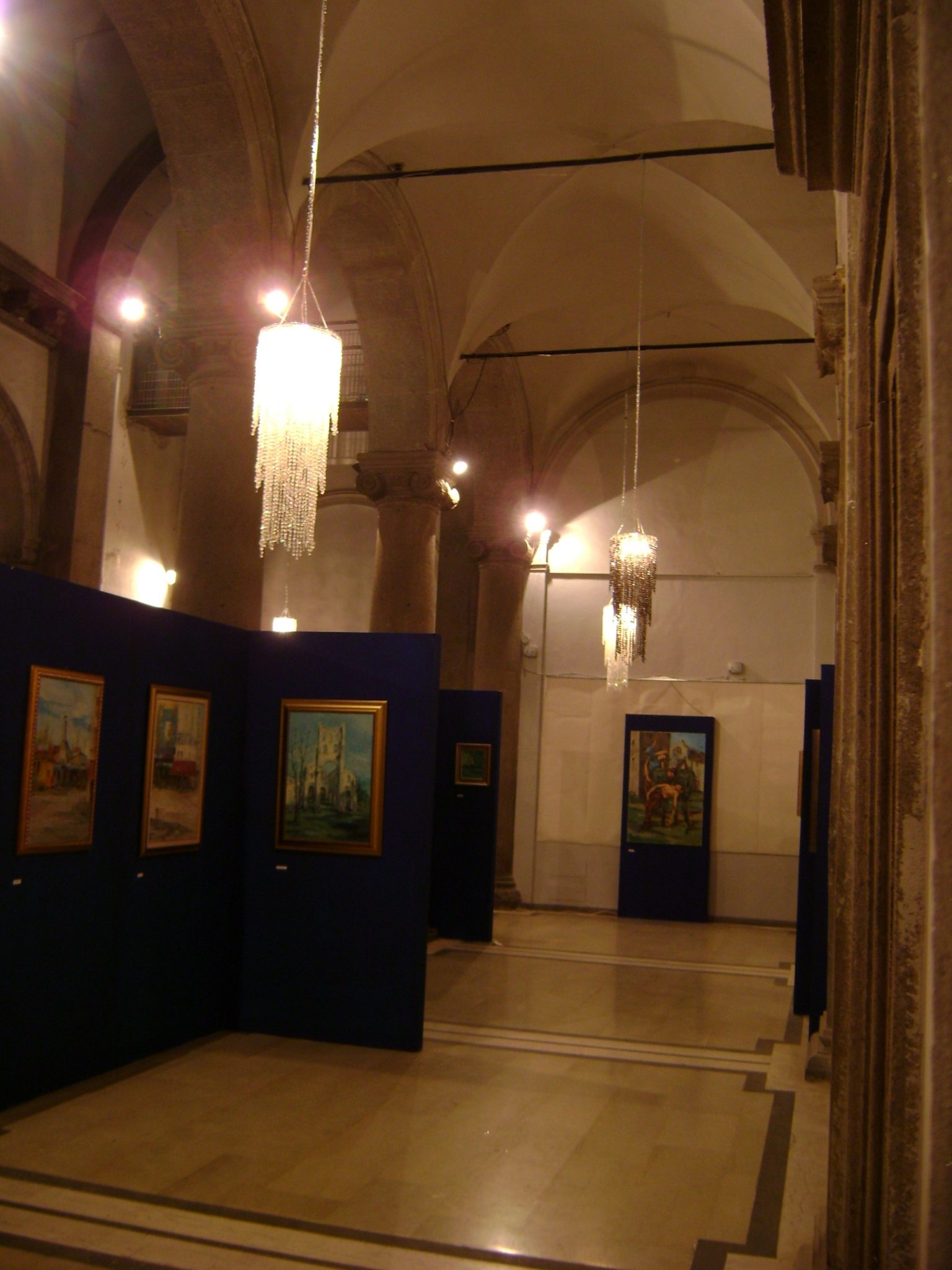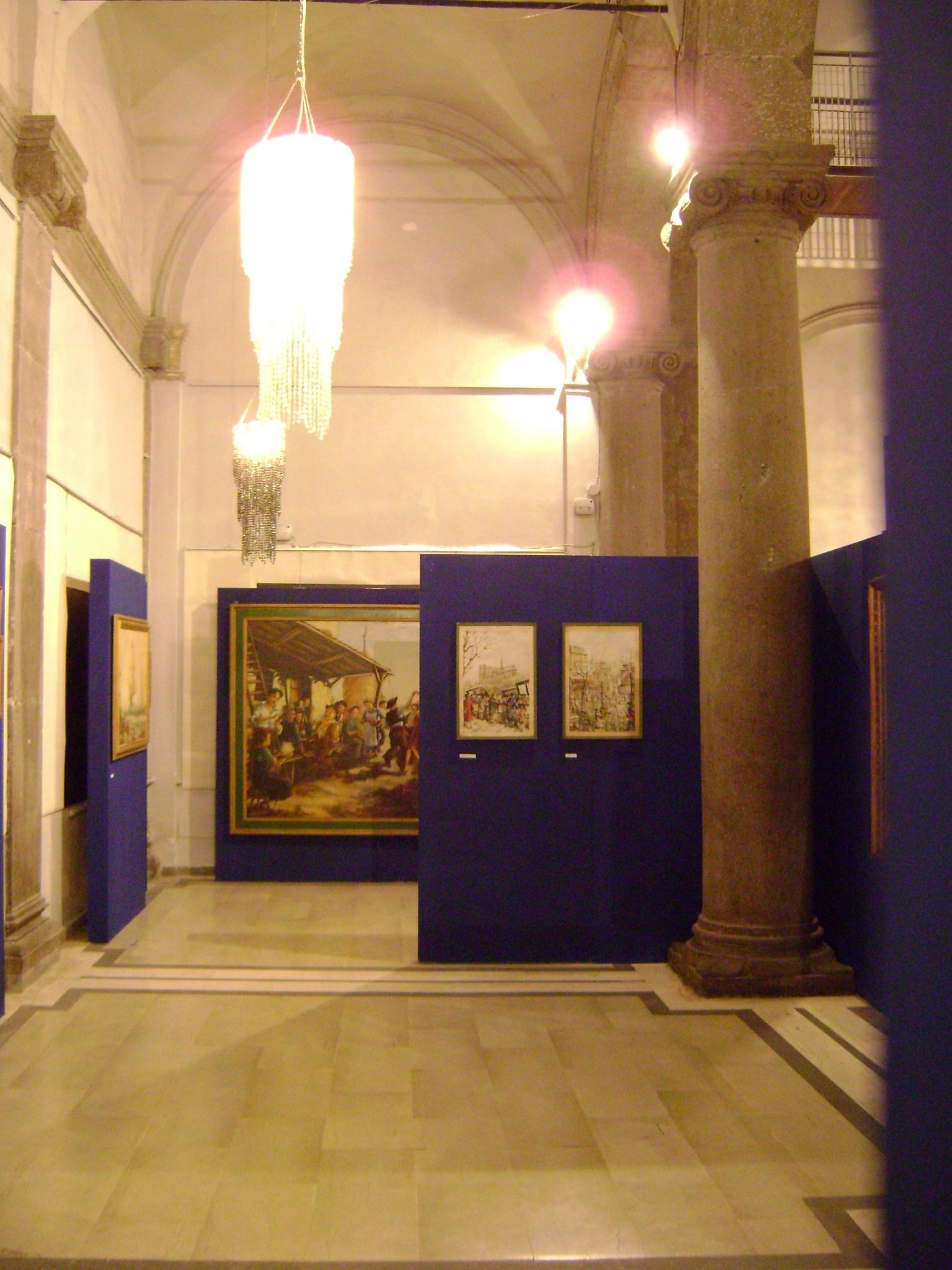
PUBLIO MURATORE
RETROSPETTIVA
Sala degli Almadiani – Viterbo (Italy) – 2008
An exhibition retracing the career of the painter and sculptor Publio Muratore, in the tenth anniversary of his death, held in a deconsecrated church in the heart of Viterbo’s historic centre, San Giovanni degli Almadiani, a building loved by the artist who had already shown it during his lifetime. An exhibition which presents a selection of his pictorial production from the first post-war paintings to his most recent works.
The unitary space of this 16th century building, a large white space punctuated by high grey stone columns, is structured into new spaces thanks to the rhythmic insertion of painted wooden panels that are articulated around the columns to form the walls that support the works. The bright blue of the panels, a colour that is very present in the works on display, becomes a guiding thread that guides the visitor through the different periods of his production, and helps to bring out the path in the refined and imposing space of this church.
The concept of framing is present in Publio Muratore’s images, which in this case refers to a temporary action of man in a much larger space than that which is presented to us. Such is the peculiarity of Muratore’s paintings: the suggestion that he gives non-visible space, given by the “imperfect” framing (according to the photographic canons). This is where his scenographic and theatrical matrix reappears: the space he describes does not run out on the canvas but ideally continues on the sides, more than with the classical expedients of extending perspective in depth, thanks to the spaces suggested laterally in relation to the framing. …] This suggested expansion of space makes it possible to freely extend the exposure time, in the photographic sense of the term, since Muratore gives the possibility and therefore the time to be able to explore them, by inviting the observer into non-visible spaces, with him accompanying them just in a first step.
Based on The Suggested Space (Vincenzo Publio Mongiardo, in the exhibition catalogue)



